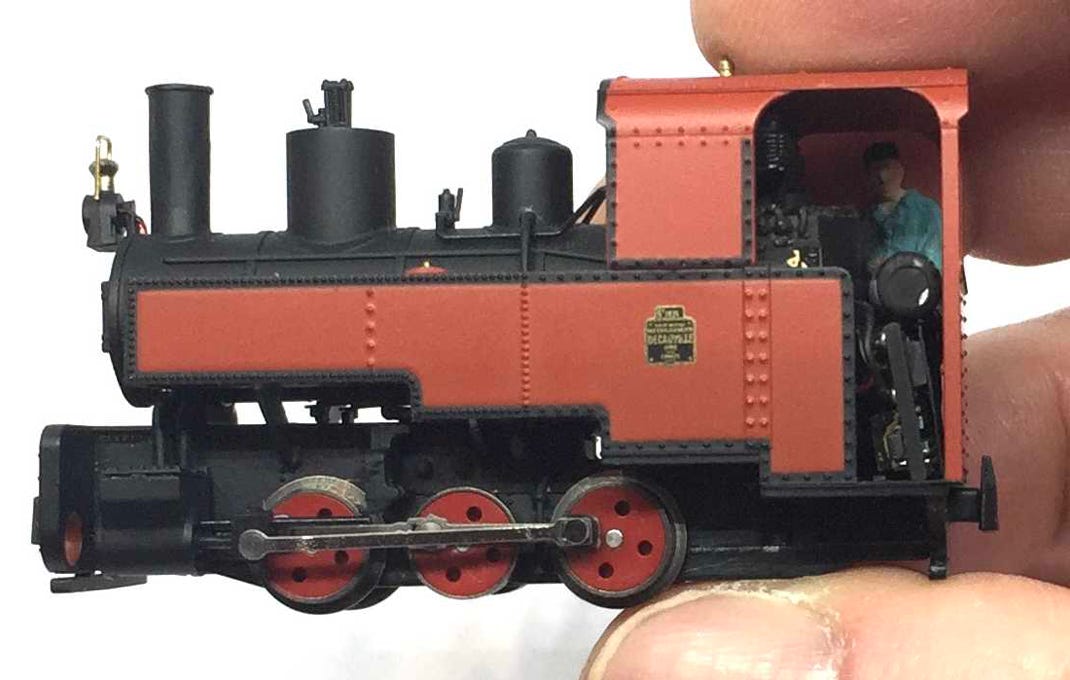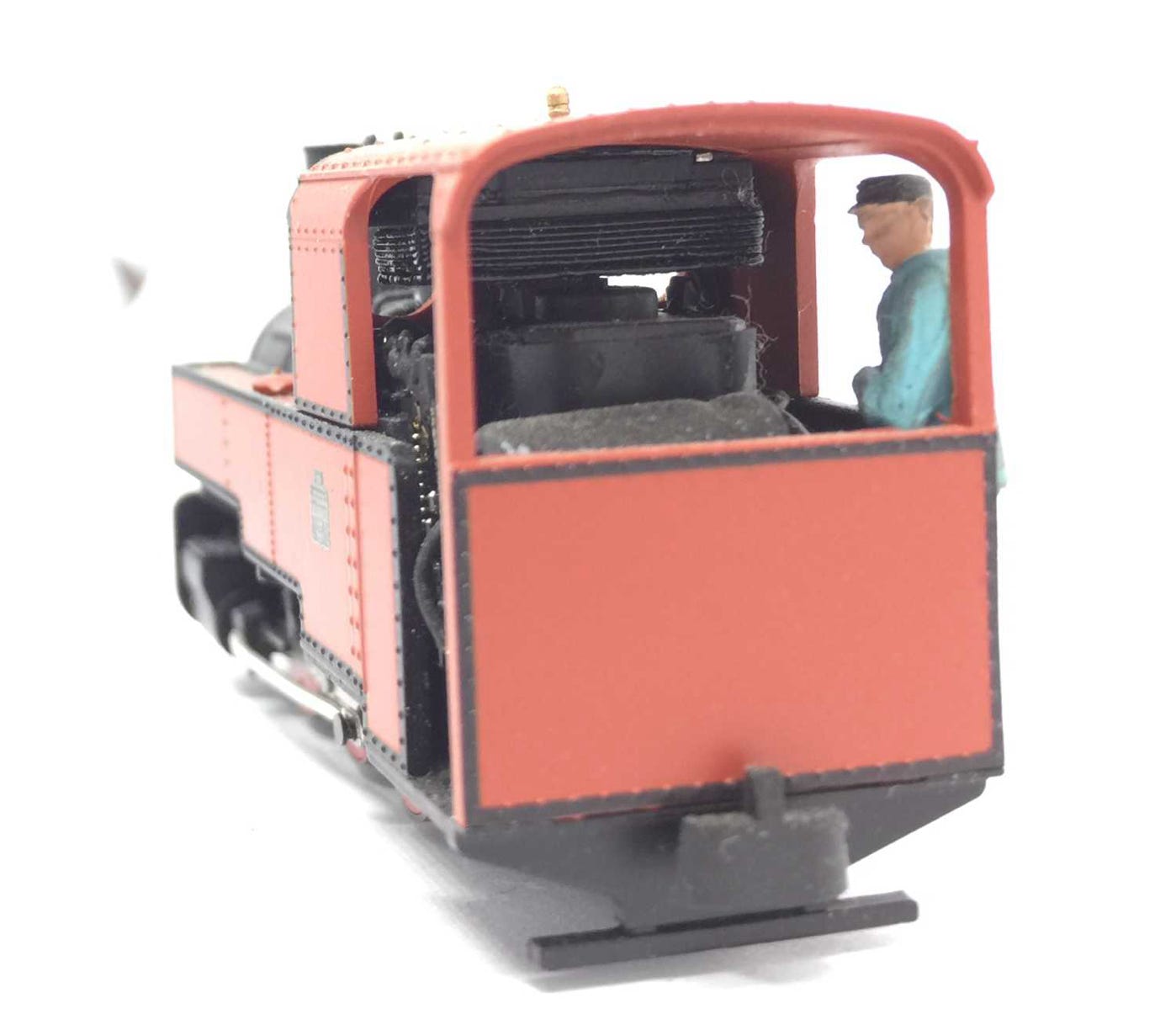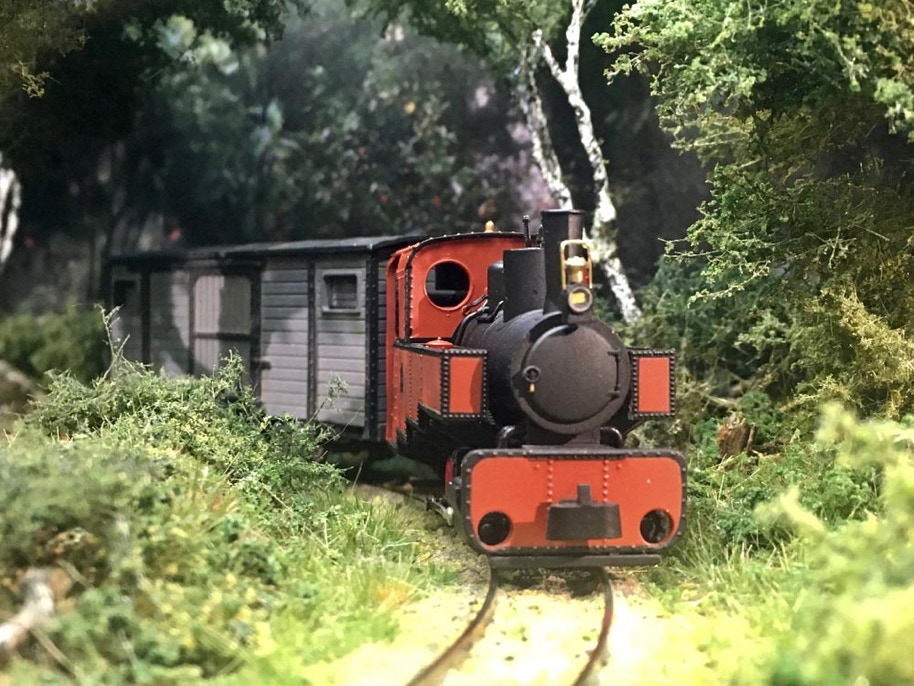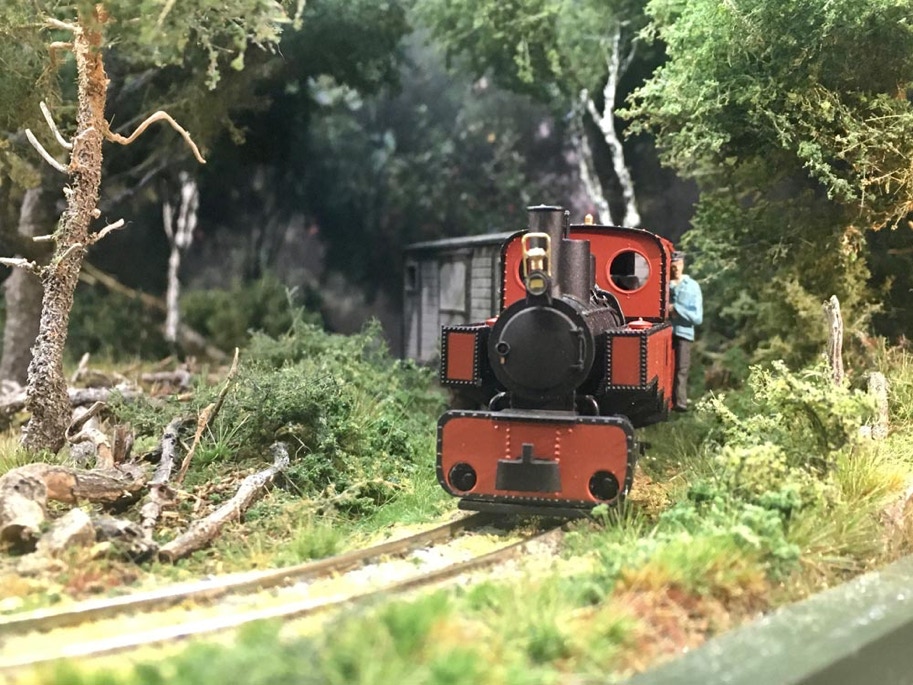As with all light models, the risk of stalling on the track is quite high. The solution is to install a Powerpack. But if you want to install sound as well, space is limited and you don’t want it to be in view, the challenge is high. It certainly was with this lovely Minitrains Decauville model. But as you can see in the video, it can be done. Read on to see how it was done.
DCC decoder installation
I’m using a Train-O-Matic Micro W decoder. I’ve desoldered all the wires, so I can connect the LED and motor wires.
Powerpack installation
Connected an ESU Powerpack Mini to the decoder, protective jacket removed and soldered a smaller supercapacitor to it. Later I replaced this by an even smaller one, which hides it better. You can get both supercapacitors in the Tramfabriek store. They can be connected to the Powerpacks by ESU, Lenz and Train-O-Matic. Shorten the cables and connected to the decoder.

Sound installation
I did not make any pictures of the sound module installation. For this model I used an Uhlenbrock Micromodule, but only because I wasn’t aware that Doehler & Haass had a similar small SUSI sound module with the SH05A. If you are doing this yourself, I would advise you to go for that. Also available in the Tramfabriek shop.
The four wires of the SUSI sound module are connected to the SUSI solder pads on the Train-O-Matic Micro decoder. I’ve searched the whole world for the best thin wire for model trains, which should be thin, flexible and a reliable soldering connection. This brilliant Ultra thin wire you can (you know what is coming now…) now buy in the Trambriek shop. Believe me, you’ll love it.
There was no space to hide the speaker out of sight, so as there is a powerpack installed now, the model can do without a flywheel. I removed the flywheel with the Tramfabriek gear puller and cut of the motor shaft with a strong pair of pliers. This strong:
A 9 x 16 mm speaker with resonator box has been glued under the roof. You guessed it, also available in the Tramfabriek shop. I swear, when I started to write this article, I wasn’t aware I had used so many items from my own store. This wasn’t suppose to be a sales pitch. At least I don’t sell the pliers. Yet. 😄
An Artitec figure hides the electronics from view.

Important CV settings when using the Train-O-Matic with a Doehler & Haass sound module
- CV 122 on the Train-O-Matic Next18 decoder decides if SUSI is on or off. Default value is 66 (off). To turn SUSI on, set value to 71.
- Without changes, a Doehler & Haass SUSI sound module in combination with a Powerpack, will give stuttering sound. Most noticeable when driving. To avoid this, do the following:
In CV 961 (Threshold value ZVS) of the Doehler & Haass module, write the value 4.
Also, set CV 114 and 115 to 0, as otherwise they will active shunting mode and “delayed braking off” on F3 and F4, which conflicts with the sounds.
Be aware that the DH decoder has Sound Fade on F8. With CV 929 you can allocate another function key, by just entering the desired function number in this CV.
Background explanation of the sound stutter issue: The Doehler & Haass sound module only needs 5V to work, but by default it is set to stop working when it receives less than 10V (value 10 in CV 961). It will switch itself off when the voltage drops below 10V. So when the train looses power from the track, due to dirt on the track for example, the powerpack will start to power the DCC decoder and D&H sound module. This energy coming from the powerpack will be around 8V. If the value of CV 961 is more than 8 (in this case the standard value 10, for example), the D&H sound module will turn itself off, because it receives less than 10V. Therefore, if you set the value below 8, like value 6, you tell the D&H sound module to switch off only when it receives under 4V.
If you have any question, feel free to contact me!
To finish it off, some nice pictures on my diorama ‘Picknick in Gelderland’. More about this diorama here.


•